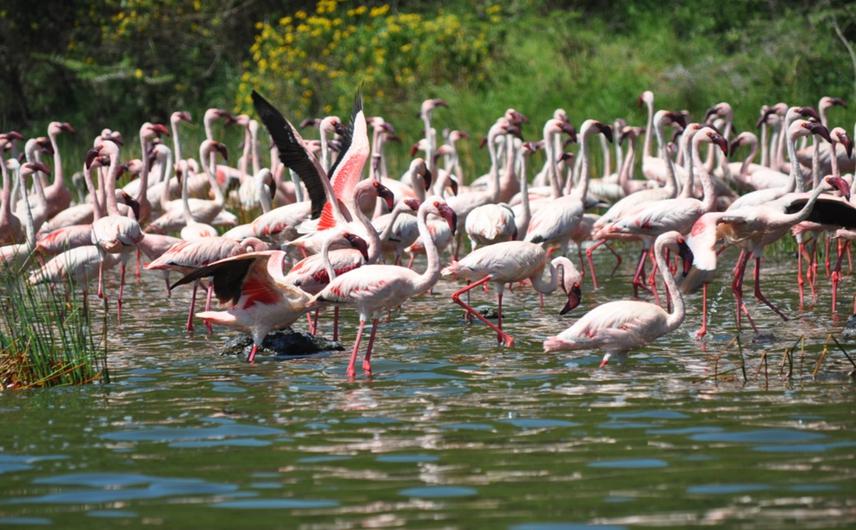Deogratias Lihepanyama
This project intends to investigate spatial and temporal sources of nutrients (N, P), how and over what period nutrients promote the growth of cyanobacteria blooms affecting the East Africa Rift Valley lesser flamingo population that depends on the Momella lakes for feeding. Though the ecosystem is within a protected area of Arusha National Park, it is suspected to suffer from effects related to human activities since the other side is exposed to human encroachment through settlements expansion and farming. That will be achieved by assessing land use and land cover change, soil nutrients, water quality, and conducting a socio-economic survey around the study area. Upon completion, the findings will feed into the creation of a management plan to enhance biodiversity conservation and ensure a stable source of revenue through ecotourism in the ecosystem, prediction of future trend about land use, and education programs on biodiversity conservation to various stakeholders.

Lesser flamingos caught up feeding along the shore of Lake Rishateni, Arusha National Park, Tanzania. © Deogratias Lihepanyama.
This project intends to conserve wildlife species particularly the lesser flamingos (Phoeniconaias minor) and their feeding habitat, which is the Momella lakes ecosystem that is suspected to suffer from effects related to human encroachment. Lesser flamingos are wading water birds found in three sub- Saharan regions in East Africa, Southern Africa, and West Africa that feed on Arthrospira fusiformis in soda lakes. The species are ecologically important for maintaining ecological balance, and as environmental bio-indicators of ecosystem health and function. The population is estimated to range between 1.5 to 2.5 million with the majority being found in Eastern Africa as per Tanzania Wildlife Research Institute report (2002). Lesser flamingos are categorized by the IUCN (2019) Red List as “Near Threatened” due to their limited breeding and feeding habitats, diseases, poisoning and chemical pollutants from agricultural fields particularly in lakes that are not well protected. Besides, habitat degradation due to increased human activities is frequently acknowledged as one among the factors impacting wildlife populations particularly those that are specialists and limited to a narrow range of resources.
Momella lakes form one of the most important feeding habitats for the East African Rift Valley lesser flamingo population and the most attractive sites in Arusha National Park as per Tanzania National Park report (2014). Though the lakes are located within a protected area, recent findings reveal that the lakes are not secure from nutrients enrichment due to frequent occurrence of algal blooms that affect the feeding ecology of lesser flamingos. However, there is still limited information about sources of nutrients that promote the growth of algal blooms in the lakes. This project intends to investigate sources of nutrients particularly nitrogen and phosphorus, how and over what time such nutrients affect water quality and hence lesser flamingo population in the lakes. That will be achieved by:
(a) quantifying sources of nutrients (N, P) that affect water quality and promote the growth of cyanobacteria blooms
(b) assessing land use and land cover change to provide information about the previous and future trends about land-use change, and driving factors for the change, which is vital in creating land-use management Action Plan
(c) conducting a socio-economic survey that will provide information for many education programs to stakeholders particularly smallholder farmers on how to sustainably utilize land without compromising the existence of biodiversity in the ecosystem and secure the country’s economy and employment opportunities through ecotourism.